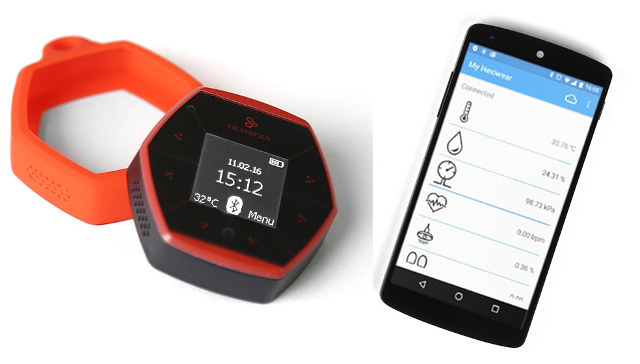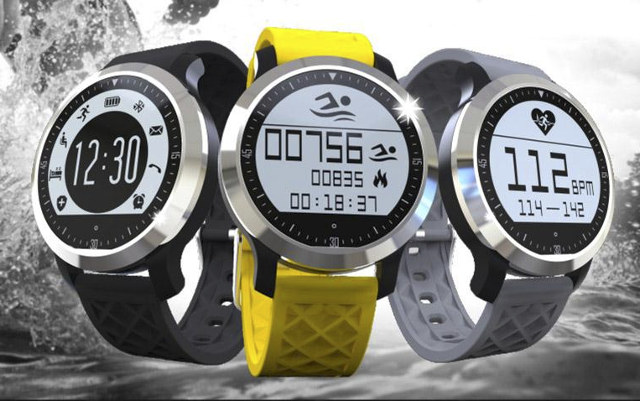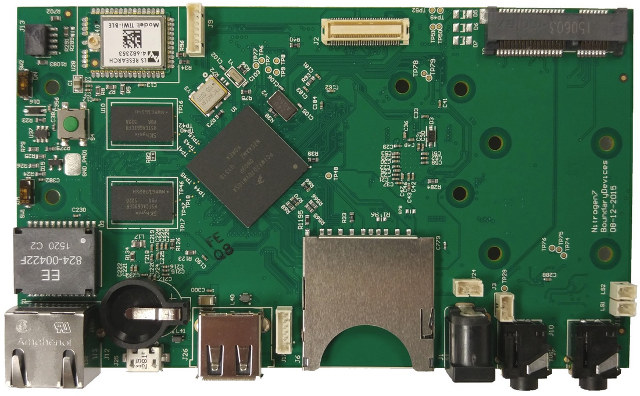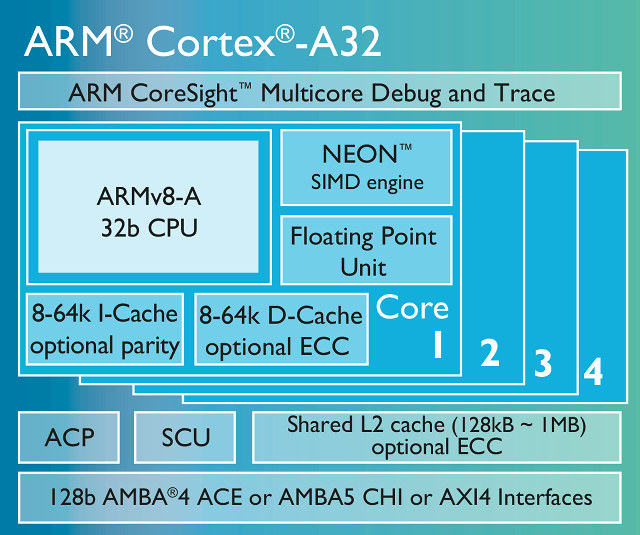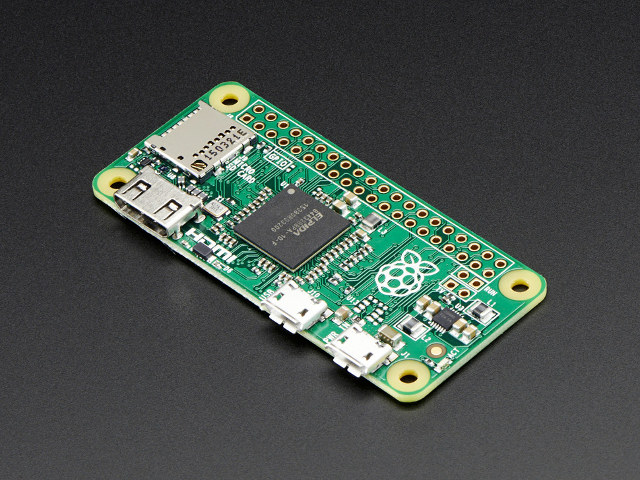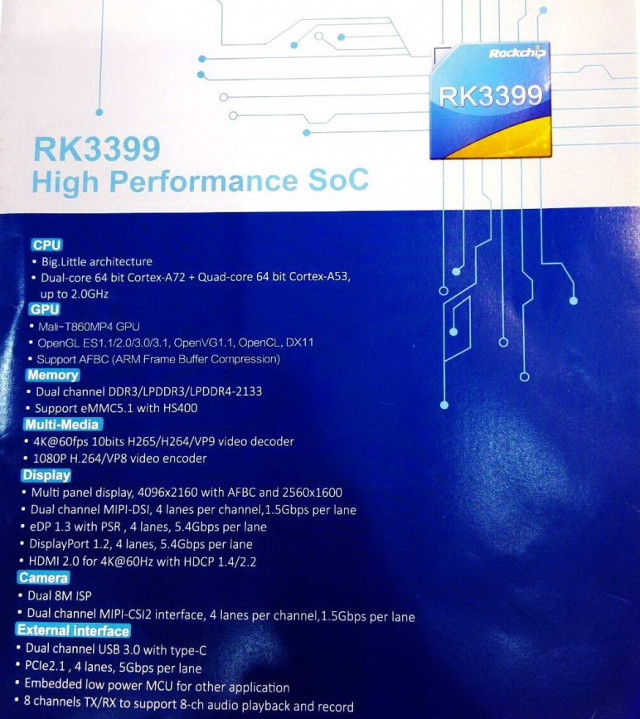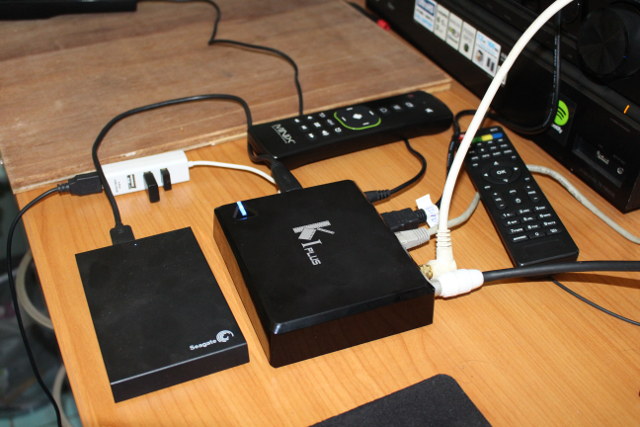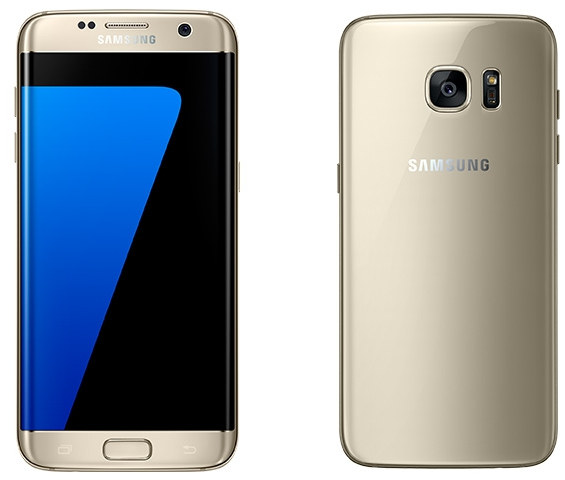MikroElektronika has designed Hexiwear, a wearable development kit that you can wear and hack as a smartwatch thanks to an (optionally) included wristband, or use a an IoT development kit thanks to its docking station taking up to three “Click” boards among a choice of over 180 modules. . Hexiwear hardware specifications: MCU – NXP Kinetis K64x ARM Cortex-M4 MCU @ 120 MHz with 1MB Flash and 256KB SRAM Storage – 8 MB Flash memory Display – 1.1” full color OLED display with capacitive touch Connectivity – Bluetooth 4.0 LE and 802.15.4 via NXP Kinetis KW4x Cortex-M0+ wireless MCU Sensors -3D accelerometer and magnetometer (NXP FXOS8700CQ), 3-Axis gyroscope (NXP FXAS21002), pressure sensor (NXP MPL3115A2R1), light-to-digital converter, humidity and temperature sensor, heart-rate sensor (HRM) USB – micro USB cable for power and charging Misc – RGB LED, haptic feedback engine, docking connector Battery – 190 mAh 2C Li-Po battery; 600 mA […]
Makibes F69 IP68 Smartwatch & Fitness Tracker is Designed for Swimming
The market is flooded with wearables such as smartwatches and fitness trackers that all track activities (walking/running) with more or less accuracy, and while some offer good IP67 or IP68 ingress protection rating, or even better 5ATM rating, allowing them to be used in water, I have not found many that can actually track swimming patterns, especially among the cheaper ones. But that’s exactly what Makibes F69 sports smartwatch promises. Makibes F69 specifications: MCU/Memory/Storage – TBD Display – 1″ round capacity touchscreen display, 128×128 resolution, always on Connectivity – Bluetooth 4.0 LE Sensors – 3-axis accelerometer and gyroscope, heart rate monitor Battery – 180 mAh charged via magnetic dock good for 6 days in power saving mode, 4 days in “healthy” hear rate mode, and 30 hours using the HRM in sports mode. Dimensions – 38 x38 x 10 mm (stainless steel case, silicon band) Weight – 34 grams IP […]
Boundary Devices Nitrogen7 Single Board Computer is Powered by NXP i.MX7 Processor
While several system-on-modules based on Freescale/NXP i.MX7 processor have been announced such as Compulab CL-SOM-iMX7, or TechNexion PICO-IMX7-EMMC, I had not seen many single board computers or development boards based on the new processor, apart from Freescale i.MX7 96Boards by Arrow Electronics which was scheduled for Q4 2015, but has yet to launch. Boundary Devices Nitrogen7 board is another option that’s available now (in limited quantities) with NXP i.MX7 Cortex A7+Cortex M4 processor, 1GB RAM, 4 to 64GB eMMC, wired and wireless connectivity, and expansion headers. Nitrogen7 board specifications: SoC – Freescale i.MX7 single or dual ARM Cortex-A7 processor @ up to 1GHz + ARM Cortex-M4 MCU + 2D graphics engine System Memory – 1GB DDR3L Storage – 4GB eMMC flash (expandable to 64GB), 2MB Serial NOR Flash, SD card slot Connectivity – 1x 10/100/1Gb Ethernet, WiFi 802.11 a/b/g/n, Bluetooth 4.1 (TiWi-BLE combo module) Display – 24-bit RGB (via expansion […]
ARM Unveils Ultra-efficient Cortex-A32 32-bit Processor Based on ARMv8 Architecture
So far you could safely equate 64-bit ARM processors with ARMv8 architecture. Not anymore. A few months after introducing Cortex A35 low power ARMv8 64-bit processor, ARM has now announced Cortex-A32 processor, even more power efficient, support ARMv8-A architecture, and designed for 32-bit embedded and IoT applications. Key features of Cortex-A32 cores: Architecture – ARMv8-A (AArch32) Multicore – 1-4x SMP within a single processor cluster, and multiple coherent SMP processor clusters through ARM AMBA 4 ACE, AXI 4 or AMBA 5 CHI technology ISA Support A32+T32 with full backward compatibility with ARMv7-A ARM TrustZone security technology ARM NEON Advanced SIMD DSP & SIMD extensions VFPv4 Floating point Hardware virtualization support Debug & Trace – ARM CoreSight DK-A32 So they’ve got rid of AArch64 instruction set out of ARMv8 architecture in order to improve power efficiency, while keeping the 100 new instructions part of Aarch32 to improve performance, and keeping ARMv7-A […]
Raspberry Pi Zero Board is Back in Stock at Pimoroni
Raspberry Pi Zero has been quite popular when it launched due to its $5 price tag, excluding shipping and taxes. It’s been too popular actually, as manufacturing could not keep pace with demand, and resellers soon had to show it as Out of Stock, or simply decided to complete pull out the product page such as Element 14. The supply tightness has lasted a few weeks, and recently I showed on GearBest for $19.10 including shipping, but it’s now out of stock, and the company expects to get more boards mid March… This also led to a website called whereismypizero.com which automatically tracks stock on some of the main distributors, namely Element14, Adafruit, The PiHut, Pimoroni, and Raspberry Pi Swag. The good news is that it is back on Pimoroni, where you can get a Raspberry Pi Zero board for 4.25 GBP ($6), unless you live outside of Europe, and […]
More Details about Rockchip RK3399 Cortex A72 SoC: 4K H.264/H.265/VP9, USB 3.0, PCIe, and DisplayPort
We already knew Rockchip RK3399 was going to be a powerful processor with two Cortex A72 cores clocked at up to 2.0GHz, and four Cortex A53 cores teamed with a Mali-T860MP4 GPU. The processor was also said to support 4K H.265 video decoding up to 60 fps, HDMI 2.0 video output, and Gigabit Ethernet. But the company is now at Mobile World Congress 2016, and has disclosed more details. Some of the newly introduced features include: Multi-media 4K @ 60fps 10-bit H.265/H.264/VP9 video decoder 1080p video encoding with H.264 or VP8 Display HDMI 2.0 with HDCP 1.4/2.2 DisplayPort 1.2 and eDP 1.3 with PSR (Panel Self Refresh) Dual channel MIPI-DSI Camera – 8MP ISP, dual channel MIPI-CSI2 External Interfaces 2x USB 3.0 ports with type-C support PCIe 2.1, 4 lanes, 5Gbps per lane 8 channels TX/RX audio for playback and record Embedded low power MCU for other applications (power control?) […]
How to Configure DVB-S2 and DVB-T2 Tuners in K1 Plus Android DTV Receiver
I have previously reviewed VideoStrong K1 Plus Android TV box, but the company also has another model with the exact same name “K1 Plus” that includes a combo DVB-S2 & DVB-T2 tuner. That’s rather confusing, but nevertheless, since I now have the tuner version of the device, I’ve installed the latest firmware, started to play with it, and today I’ll explain how to configure DTV app for both satellite and terrestrial digital TV reception. Hardware Setup and DTV App The first step is to connect both your satellite dish and indoor or outdoor TV antenna to the device, as well as all necesarry cables, and possibly a USB hard drive if you want to use PVR function. Now go to the list of apps start DTV app, or press the DTV button on the remote control. Each time the app starts you’ll be asked to select DVBT2 or DVBS2, and […]
Samsung Unveils Galaxy S7 and Galaxy S7 Edge Smartphones with Exynos 8890 or Snapdragon 820 Processor
As Mobile World Congress 2016 is about to start, Samsung has officially announced Galaxy S7 and Galaxy S7 Edge smartphones powered by either Qualcomm Snapdragon 820 in the US, or the company’ own Exynos 8890 in the rest of the world. Let’s see if beside faster and more efficient processors, the company has brought some other innovation, or if it is just another boring smartphone release. Both smartphones basically share the same specifications, and the main difference is that Galaxy S7 edge has a curved screen. SoC Samsung Exynos 8 Octa (Exynos 8890) octa core processor with four Exynos M1 core @ 2.3GHz + four Cortex A53 cores @ 1.6Ghz, and Mali-T880MP12 GPU, manufactured using 14nm process. Qualcomm Snapdragon 820 quad core Kryo processor with two cores @ up to 2.2GHz, and two cores @ up to 1.6GHz, an Adreno 530GPU, an Hexagon 680 DSP, and a 14-bit Spectra ISP. System […]


